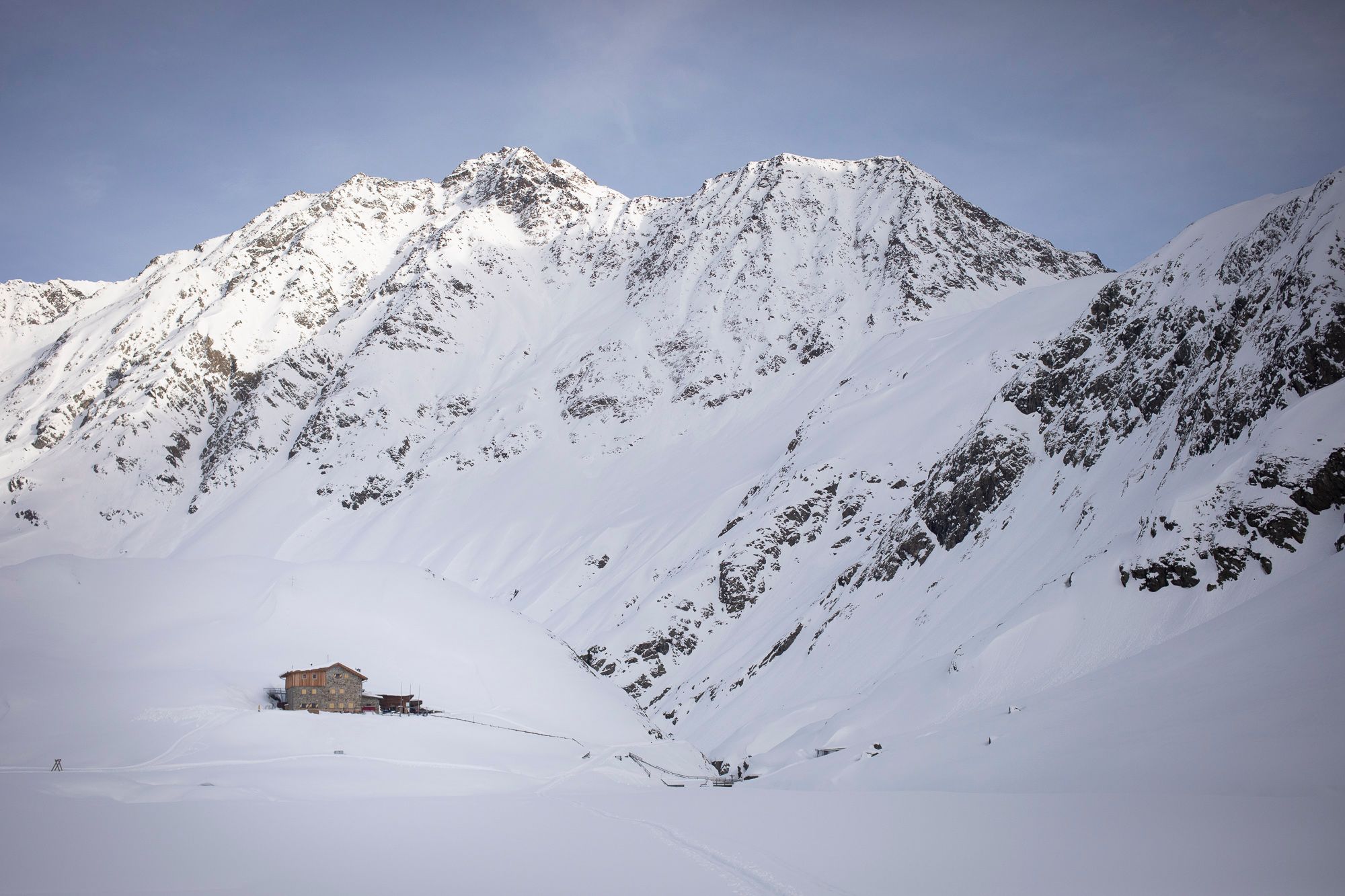
The Kitzbühel Alps offer ideal opportunities for easier ski tours with gentle slopes and serviced huts such as the Bochumer Hütte and the Neue Bamberger Hütte. More challenging are winter crossings of the neighbouring Kaiser Mountains, which attract more experienced mountaineering enthusiasts with their striking peaks.
The Rofan cable car provides access to the small Rofan massif, where the Erfurter Hütte offers easily accessible accommodation for snowshoe tours. In contrast, the wild Karwendel, with the Pleisenhütte as the only serviced base, remains a destination for the ambitious.
The Tux Alps are easily accessible from the Inntal valley through side valleys and, with huts such as the Lizumer Hütte, offer ideal bases for touring weekends in varied terrain. In contrast, the valleys to the Zillertal main ridge are surprisingly remote in winter with long ascents and challenging peaks.
The Stubai Alps offer snow-sure huts at over 2,000 metres above sea level, most of which can be reached without glacier equipment, as well as a diverse ski touring area with destinations for all levels of difficulty. Thanks to the dense network of huts, both exciting crossings and routes such as the "Orient Express" are possible.
The Ötztal Alps, characterised by high peaks and glaciers, are primarily a destination for high-altitude ski tours in late winter, which are possible until May. With the Venter Runde, they also offer the most famous ski tour crossing in Tyrol, while Pitztal and Kaunertal offer a wide range of touring options without classic huts.
The Silvretta, which stretches from Tyrol via Vorarlberg to Switzerland, is one of the most popular ski touring areas in the Alps with its high peaks such as the Piz Buin and hut crossings. The Jamtalhütte on the Tyrolean side in particular is a well-known destination for tours in late winter.
Tyrol's highest mountain, the Grossglockner, is located in the Hohe Tauern and, like other Tauern massifs, is easier to reach from the south, for example from East Tyrol, in winter. The Lienz Dolomites, on the other hand, offer easier and more challenging ski tours earlier in the season as well as spectacular accommodation such as the Dolomitenhütte.